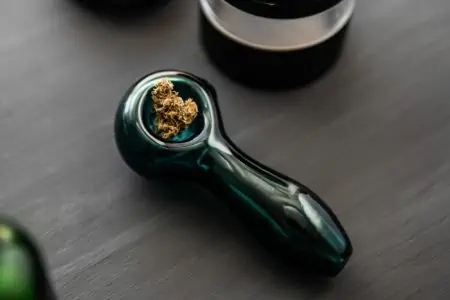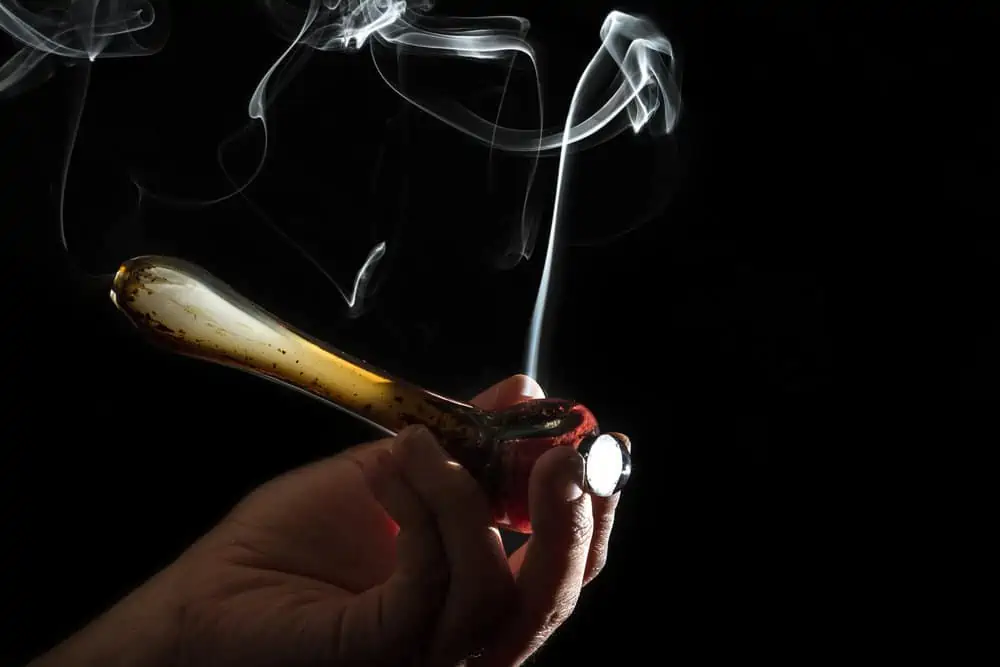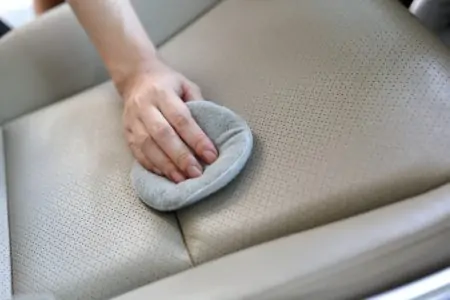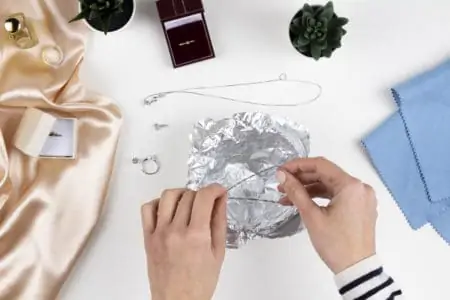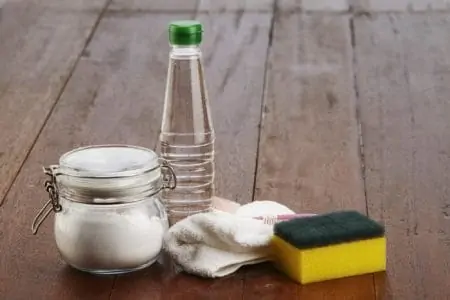Is your pipe becoming clogged up with soot and grime making it hard to smoke? Then you will need to clean your pipe so that it’s as good as new. Thankfully, no matter whether you smoke tobacco or marijuana, it’s easy to clean a pipe.
So here’s a quick guide on how to clean a weed pipe and a tobacco pipe.
Key Takeaways
- Clean a pipe by soaking it in rubbing alcohol and coarse salt in a sealed plastic bag, shaking the bag, and rinsing with dish soap and warm water.
- Clean your pipe once a week to prevent clogging, reduce fire risk, and maintain optimal smoking experience.
- Different materials, like glass, wood, acrylic, and metal, require different cleaning methods; use appropriate techniques for each type of pipe.
- Avoid using bleach or acetone-based nail polish remover, as they may cause health hazards when smoking.
How Often to Clean a Pipe
A pipe needs to be cleaned once a week. This not only keeps your pipe shining but it prevents your pipe from clogging. Clogging prevents the smoke from traveling through the pipe so you’re not getting the best use from your pipe.
Another reason to clean your pipe frequently is because dirty pipes are much more likely to catch on fire than clean pipes. The residue left behind in the pipe is flammable. Also, inhaling pipe residue that has caught on fire is harsh on the throat and poses health risks.
How to Clean a Pipe
Here’s a quick guide on how to clean a glass pipe with rubbing alcohol and salt. This will allow your pipe to start shining like a crystal again.
- Time: 12-13 hours
- Difficulty: Beginner
What You’ll Need
- A long thin object such as a pipe cleaner, cotton swab, or needle
- Cotton swab
- Sealable plastic bag
- Rubbing alcohol or isopropyl alcohol
- Coarse salt, kosher salt, or Epsom salt
- Dish soap
1. Remove Residue From Pipe
Hold your pipe upside down and tap it gently against a garbage can or bowl. Your goal is to knock the loose residue out of your pipe.
Next use a long narrow object such as a pipe cleaner, cotton swab, or needle to remove all of the large and easily dislodged pieces of resin in the pipe. Be gentle. Your goal isn’t to remove all of the resin, just the stuff that’s easy to remove.
2. Place Pipe In Bag
Fill the plastic bag with rubbing alcohol or isopropyl alcohol. If you can, use 90% alcohol as it will work faster. The more diluted rubbing alcohol will require your pipe to soak for longer before all of the tar and resin are removed.
Put your pipe into the bag and make sure that it’s immersed in the alcohol. Then add 1 or 2 tablespoons of salt to the bag. The salt will act as an abrasive sponge to scrub away the resin so it’s best to use a large-grained salt rather than table salt.
3. Shake Pipe
Move the pipe around in your plastic bag. You need to work the salt into the inside of the pipe. Use your fingers as needed to see how much salt you can maneuver into it.
Once you’ve gotten as much salt as you can into the pipe, shake the bag for 1-2 minutes or until the pipe appears to be clean.
4. Soak Pipe
Leave the pipe to soak in the isopropyl alcohol and salt mixture for 12 hours. If the salt appears to be disappearing, don’t despair, it’s dissolving in the alcohol. Add more salt as needed.
After 12 hours, check the pipe. If it’s filthy, soak the salt in a fresh mixture for another 12 hours. If it looks clean move on to the next step.
5. Wash Pipe
Remove your pipe from the bag. Wash the pipe with dish soap and warm water to remove all traces of alcohol and salt from it.
Dip a cotton swab into clean rubbing alcohol and rub at any stubborn stains to remove them.
Top Tip
Remove any water and non-resin stains by making a mixture of equal parts warm water and lemon juice. Soak the pipe for 10-15 minutes in the mixture.
How to Clean a Pipe Without Alcohol
These methods are useful to know, especially if you don’t have any rubbing alcohol in your house when you need to clean your pipe.
With Baking Soda and Vinegar
- Mix Baking Soda and Vinegar: Put your pipe in a sealable plastic bag. Add baking soda to the bag before mixing it with vinegar. Start with a 1:1 ratio and tweak as needed. The fizzing produced by the combination of vinegar and baking soda will break down the resin on your pipe.
- Soak: Leave your pipe to soak for at least 30 minutes. Check the pipe and repeat the process as needed until it’s clean.
- Wash: Wash your pipe with warm running water and dish soap to remove all of the baking soda and vinegar residue.
- Air dry: Allow your pipe to dry completely before using it.
With Pipe Cleaning Solution
- Remove Loose Residue: Tap your pipe over a bowl or trash can to remove all the loose residue in it.
- Soak: Immerse your pipe in a sealable plastic bag that’s filled with a pipe cleaning solution such as Formula 420 Pipe Cleaner.
- Shake the Bag: Within a few minutes, the resin should be gone.
- Rinse: Rinse your pipe under warm running water.
- Air dry: Allow time for your pipe to air dry before using it again.
With Hydrogen Peroxide
- Remove Loosened Bits: Gently tap your pipe over a bowl or trash can to remove all the loosened bits of resin in it.
- Soak: Fill a sealable plastic bag with hydrogen peroxide and submerge the pipe in the bag. Add a teaspoon of Epsom or coarse salt to the bag. Soak your pipe for 12 hours.
- Shake: Shake the bag to clean the pipe.
- Wash: Wash the pipe with warm running water and dish soap. Repeat the entire process as needed until the pipe is clean.
- Air dry: Wait for the pipe to dry completely before using it.
By Boiling the Pipe
- Remove loose residue: Start by gently tapping the pipe against the side of a bowl or garbage can to knock out all the loose resin you can. Then use a cotton swab to remove the large pieces of gunk.
- Clean: Rinse the pipe with warm water to make sure any loose particles are gone. Warning: Make sure you use warm water to rinse the pipe. Cold water will cause a drastic temperature change when you add your pipe to the boiling water that may cause your pipe to break.
- Boil Pipe: Add 3-4 inches of water to a small pot and bring it to a boil. Once it’s boiling, reduce it to a simmer. Submerge your pipe in the water and let it simmer for 20-30 minutes. Watch the pot to make sure that the water doesn’t evaporate away which may cause your pipe to break.
- Inspect Pipe: After the time has finished, remove the small pot from the heat, and drain the water inside the pipe. Use a hot pad or oven mitt to handle the pipe as it will be extremely hot. Do not put the pipe under cold water to cool it as you might shatter your pipe. Check your pipe for any lingering resin still inside it. You may need to repeat the boiling process a few times before the pipe is clean.
- Remove Remaining Residue: Use a pipe cleaner or cotton swab to remove the last of the residue. If you have any water stains, soak the pipe in a mixture made of equal parts lemon juice and water.
- Air dry: Allow your pipe time to air dry completely before using it again.
By Freezing Pipe
- Freeze Pipe: Freezing your pipe causes the resin to harden and dry making it easier to dislodge. Put your pipe in the freezer for 30-60 minutes.
- Remove Resin: Pull the pipe out of the freezer and carefully use a needle to remove the resin on and in your pipe. You will need to work quickly as the resin will quickly warm up and become gummy again. If this happens, simply put your pipe back into the freezer to refreeze.
- Wash Pipe (optional): After removing all the resin from your pipe by freezing it, you can wash the pipe in warm soapy water for a deeper clean. Make sure to allow your pipe enough time to air dry before using it again.
How to Dry a Pipe After Cleaning
The best way to dry a pipe after cleaning it is to lay a towel on a table. Place your pipe in the middle of the towel and leave it to air dry for 1-2 hours. Make sure it’s completely dry before using it.
Cleaning Different Types of Pipes
The cleaning method you need to use for your pipe depends on the material that it is made of. Here are some hacks you can use to clean your pipes.
Glass Pipes
Glass pipes can be cleaned by soaking them in an isopropyl alcohol and salt mixture until the resin has been broken down and removed.
Wood Pipes
Wood pipes should not be soaked. Instead, run a pipe cleaner through the stem and airhole of the pipe to remove any particles in the pipe. Knock the pipe against your hand to help remove the loosened bits.
Use a cotton swab to clean the mortise or the area where the stem connects to the bowl. Moisten a pipe cleaner with isopropyl alcohol or grain alcohol to clean the inside of your pipe. Do not allow the alcohol to touch the outside of your pipe as this can cause damage to the wood.
Acrylic Pipes
Do not use alcohol products such as rubbing or isopropyl alcohol to clean an acrylic pipe as these products will damage the pipe. Instead, use hot water and pipe cleaners to clean them. Fill the pipe with hot water. Scrub the pipe with pipe cleaners. Rinse the pipe out over a sink. Repeat until the pipe is clean.
Metal Pipes
Soak a metal pipe in isopropyl or rubbing alcohol for at least 24 hours. Then use a pipe cleaner or cotton swab to remove any resin still stuck to the pipe. Finish by drying and buffing your pipe with a soft cloth.
What to Avoid When Cleaning Pipes
Do not clean a pipe with bleach. The bleach isn’t able to remove the residue left from the smoke and may actually be absorbed by the residue and released when heated. It may enter your lungs and be a health hazard.
Also, don’t use acetone-based nail polish remover to clean your pipe. It may also cause toxic fumes.
